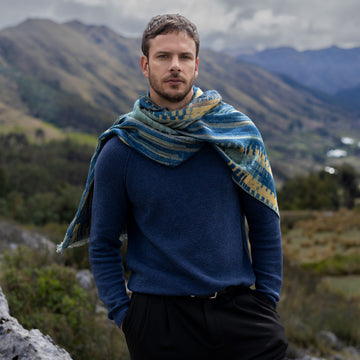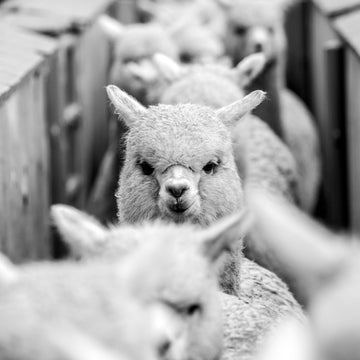THE WORLD OF THE ALPACA
The alpaca, a domesticated animal with a millennial history, plays an essential role in Andean history and economy. However, it was only in the second half of the 20th century that alpacas began to gain global recognition beyond South America. Originating from the Peruvian highlands, this species still has limited genetic understanding today, despite its crucial role in the development of pre-Columbian cultures.

During the Inca Empire, alpacas held a central position, providing material for textiles worn by millions and serving as a form of currency. However, the arrival of the Spanish displaced alpacas to more arid terrains, elevating them to altitudes of up to 4,000 meters. In these mountainous regions, where daily temperature variations can exceed 35 degrees, alpacas became the exclusive livelihood for communities. Their fiber developed exceptional thermal properties due to these extreme conditions.
Beyond its incomparable softness, known in the textile industry as “the hand,” alpaca stands out for its resilience and wide range of natural colors. It offers a sustainable alternative to artificial dyeing, especially relevant in the face of climate change, which directly impacts their Andean habitat. Alpacas, with their adaptability and low ecological footprint, symbolize sustainability.

In this context, Grupo Inca enthusiastically takes on the challenge of preserving and promoting alpaca. Our commitment extends beyond genetic improvement and textile innovation; it also recognizes the value of the work carried out by Andean communities. We strive to enhance sustainable practices, develop high-quality textiles, and ensure fair compensation for those who keep the noble tradition of alpaca alive.
Discover more about our efforts to share the history and benefits of alpaca with the world at Grupo Inca’s website www.grupoinca.com and find the finest products at KUNA: kunastores.com







